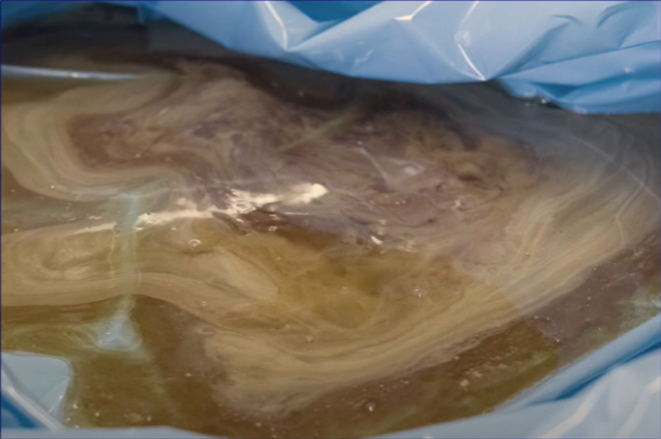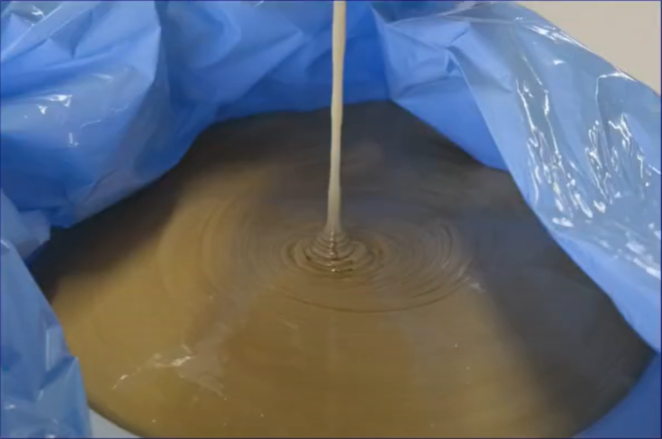ALL FOAMS ARE NOT ALIKE

Only Alpha Cradle® foam has been thoroughly tested for toxic out gassing of hazardous vapor concentrations. Our foaming agents are safe to use for patients of all shapes and sizes. Choosing a less effective, potentially toxic foam, may subject your patient and yourself to dangerous vapor concentrations of TDI or MDI.
For over 40 years, hospitals and treatment clinics have trusted Smithers Medical Products for the safest, most advanced radiation treatment products on the market.
Insights from the SMP lab:
- Toxicology – It amazes me how many RT centers use other brands that have never
been tested for MDI vapor concentrations. Many foams contain high levels of MDI vapors and formaldehyde gas.
-JaneALPHA CRADLE BRAND FOAM IS THE ONLY FOAM TESTED AND PROVEN TO BE SAFE. SEE TOXICOLOGY SHEET
In this post-COVID environment, re-using repositioning devices may pose a health risk to radiation patients with weakened immune systems. Used vacuum bags can transmit viruses and may be considered pathological waste by the governing State. See Regulated Medical Waste (guidelines). Additionally, antimicrobial-treated positioners can expose patients to dangerous chemicals. See: Prop 65 Warnings. - Attenuation — Only Alpha Cradle brand foam has gone through documented testing for transmission and build-up characteristics. Transmission was insignificant for all megavoltage energies.
- Foam was originally designed for use with extruded polystyrene backboards. We always recommend placing a 1/2” piece of extruded polystyrene in the bag and then pouring the foam on top of the bag. Making forms directly on carbon fiber boards or other hard surfaces allow heat from the reaction to be transferred to the counter’s surface. This makes for poor forms with poor cell structures that easily degrade with time. By placing a small piece of foam inside the bag, it insulates the liquid foam keeping the heat inside the reaction for a high rising creamy foam that will harden and retain it’s integrity.
- If the foam doesn’t fully rise, it may degrade over time and crack. This is caused by improper shaking. SHAKE VERY HARD, WITH CAP POINTED DOWN OVER BAG, VERY VIGOROUSLY FOR 10-15 SECONDS. Shaking for over 30 seconds can cause foam to explode out of the bottle. SMP’s Alpha Cradle brand foam is the only foam in the world with specially designed accordion-style bottles that keep this under control. If the bottle starts expanding before you open it, throw it away immediately.


Assessment of exposure to TDI and MDI during polyurethane foam production in Poland using integrated theoretical and experimental data
Kupczewska-Dobecka M, Czerczak S, Brzeźnicki S.Environ Toxicol Pharmacol.
Abstract
The aim of this study was to develop an optimal strategy for the assessment of inhalation exposure to isocyanates such as TDI and MDI in the production of polyurethane foam by integration of theoretical and experimental data. ECETOC TRA and EASE predictive models were used to determine the estimated levels of exposure to isocyanates. The results of our study suggest that both applications EASE and ECETOC TRA can be used as a screening 1st Tier tool in this case study. PROC12 ECETOC TRA category can be linked to exposure on TDI during polyurethane foam manufacturing because it is working properly and exceeds 90th percentile measured concentration with factor 3 and the maximum measured value with factor 1, 5. The value estimated by using category PROC2 is underestimated so this category should not be linked to this scenario. At the same time, the applications of EASE overstate the expected concentrations although the scenario “Use in closed process” seems to underestimate the exposure at the “lower end”. For MDI the both models estimate exposure in a conservative manner.
Highlights
▸ We measured the concentration of the mixture of isomers of TDI and MDI in the ambient air of work environment in a plant manufacturing polyurethane foam.
▸ We used ECETOC TRA and EASE predictive models to determine the estimated levels of exposure to isocyanates: TDI and MDI.
▸ The study confirmed the feasibility of using of both models, i.e., EASE and ECTOC TRA, as a screening tool for assessing occupational exposure and health risk.
▸ In the case of MDI, both models have estimated the values of the concentrations in a conservative manner.
▸ Application of ECETOC TRA to assess occupational exposure to TDI in the process of polyurethane foam blowing leads to the conclusion that in order to ensure that the process polyurethane foam blowing is properly controlled, workers employed at the described workplace should be periodically provided with full masks to ensure respiratory protection when performing activities involving exposure to TDI.This is one of dozens of articles citing polyurethane foams not safe for indoor or human use without the use of ventilators, masks, etc. Protect your patients and staff with safe, comfortable and dependable Alpha Cradle products that have been designed exclusively for the radiation therapy patient.